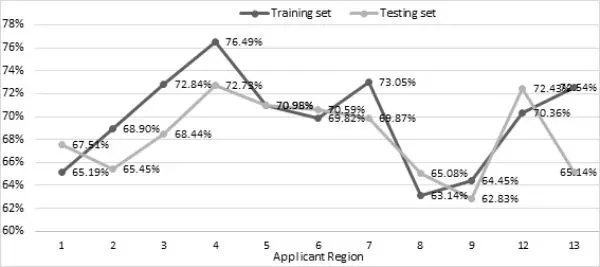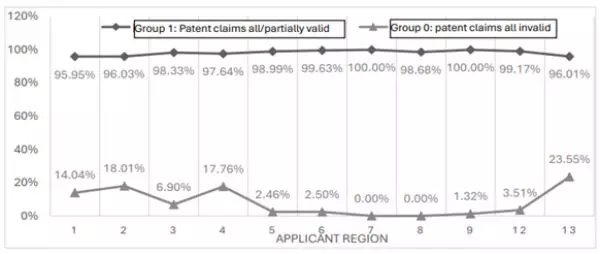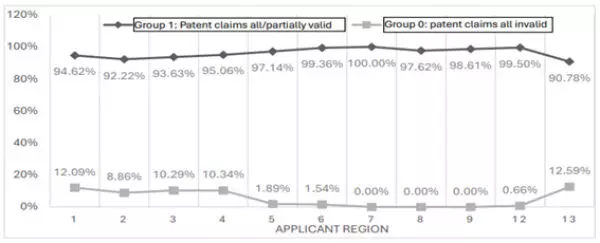- Home
- News
- Articles+
- Aerospace
- Artificial Intelligence
- Agriculture
- Alternate Dispute Resolution
- Arbitration & Mediation
- Banking and Finance
- Bankruptcy
- Book Review
- Bribery & Corruption
- Commercial Litigation
- Competition Law
- Conference Reports
- Consumer Products
- Contract
- Corporate Governance
- Corporate Law
- Covid-19
- Cryptocurrency
- Cybersecurity
- Data Protection
- Defence
- Digital Economy
- E-commerce
- Employment Law
- Energy and Natural Resources
- Entertainment and Sports Law
- Environmental Law
- Environmental, Social, and Governance
- Foreign Direct Investment
- Food and Beverage
- Gaming
- Health Care
- IBC Diaries
- In Focus
- Inclusion & Diversity
- Insurance Law
- Intellectual Property
- International Law
- IP & Tech Era
- Know the Law
- Labour Laws
- Law & Policy and Regulation
- Litigation
- Litigation Funding
- Manufacturing
- Mergers & Acquisitions
- NFTs
- Privacy
- Private Equity
- Project Finance
- Real Estate
- Risk and Compliance
- Student Corner
- Take On Board
- Tax
- Technology Media and Telecom
- Tributes
- Viewpoint
- Zoom In
- Law Firms
- In-House
- Rankings
- E-Magazine
- Legal Era TV
- Events
- Middle East
- Africa
- News
- Articles
- Aerospace
- Artificial Intelligence
- Agriculture
- Alternate Dispute Resolution
- Arbitration & Mediation
- Banking and Finance
- Bankruptcy
- Book Review
- Bribery & Corruption
- Commercial Litigation
- Competition Law
- Conference Reports
- Consumer Products
- Contract
- Corporate Governance
- Corporate Law
- Covid-19
- Cryptocurrency
- Cybersecurity
- Data Protection
- Defence
- Digital Economy
- E-commerce
- Employment Law
- Energy and Natural Resources
- Entertainment and Sports Law
- Environmental Law
- Environmental, Social, and Governance
- Foreign Direct Investment
- Food and Beverage
- Gaming
- Health Care
- IBC Diaries
- In Focus
- Inclusion & Diversity
- Insurance Law
- Intellectual Property
- International Law
- IP & Tech Era
- Know the Law
- Labour Laws
- Law & Policy and Regulation
- Litigation
- Litigation Funding
- Manufacturing
- Mergers & Acquisitions
- NFTs
- Privacy
- Private Equity
- Project Finance
- Real Estate
- Risk and Compliance
- Student Corner
- Take On Board
- Tax
- Technology Media and Telecom
- Tributes
- Viewpoint
- Zoom In
- Law Firms
- In-House
- Rankings
- E-Magazine
- Legal Era TV
- Events
- Middle East
- Africa

Machine Learning Predict Patent Sustainability For Invention Patent

Machine Learning Predict Patent Sustainability For Invention Patent The sustainability of a patent is crucial when significant economic value is at stake. However, there are relatively few flawless patents that can assert market exclusivity. As a result, companies frequently pursue invalidation re-examinations to invalidate competitors' patents or to restrict the scope of claims associated...
To Read the Full Story, Subscribe to Legal Era News
Access Exclusive Legal Era Stories, Editorial Insights, and Expert Opinion.
Already a subscriber? Sign in Now
Machine Learning Predict Patent Sustainability For Invention Patent
The sustainability of a patent is crucial when significant economic value is at stake. However, there are relatively few flawless patents that can assert market exclusivity. As a result, companies frequently pursue invalidation re-examinations to invalidate competitors' patents or to restrict the scope of claims associated with key patents
1 Introduction
Patents offer substantial economic benefits, leading patent holders to actively protect their Intellectual Property Rights. Conversely, competitors frequently attempt to exploit vulnerabilities in these patents, seeking to have them annulled through invalidation re-examinations at patent offices or by initiating infringement lawsuits in courts. This research aims to forecast the sustainability of invention patents in China throughout the invalidation re-examination process by utilizing machine learning techniques.
The sustainability of a patent is crucial when significant economic value is at stake. However, there are relatively few flawless patents that can assert market exclusivity. As a result, companies frequently pursue invalidation re-examinations to invalidate competitors’ patents or to restrict the scope of claims associated with key patents.
2 Literature Review
Aristodemou and Tietze (2018) utilized artificial intelligence methodologies, including machine learning and deep learning, to analyze patent information, uncovering relationships, trends, and patterns that aid in decision-making. Industry experts acknowledge the significance of artificial intelligence in the analysis of patent data. Alcácer and Cruz-Machado (2019) examined patent citations to assess the flow of knowledge. Dernis et al. (2019) discussed the influence of artificial intelligence on the top 50 companies in terms of scientific publications, patents, and trademarks.

However, the existing literature often presents inconclusive results regarding sample sizes, sources of patents, and the experience and skills involved. In recent years, China has emerged as the leading country in both patent applications and disputes. This situation has motivated the current research.
3 Theory and Model
Machine learning is a subset of artificial intelligence that focuses on developing algorithms and statistical models, enabling computers to learn from data and make informed predictions or decisions. Support Vector Machine (SVM) is a supervised machine learning algorithm designed to identify the optimal hyperplane for classifying data points into distinct categories, proving particularly effective for high-dimensional datasets. In cases of non-linearly separable data, SVM utilizes kernel functions to transform the data into a higher-dimensional feature space, where it can be separated linearly by a hyperplane. The Radial Basis Function (RBF) kernel is one of the most widely used kernel functions for SVM. In this research, Analysis of Variance (ANOVA) is employed to identify significant patent indicators and regions where invalidation re-examination decisions have been filed.
Our objective is to determine the applicability of SVM with RBF in predicting the sustainability of patents and their patentability.
4 Materials and Methods
Based on the existing decisions regarding invalidation re-examinations at the China State Patent Office, a total of 8,666 invention patents were categorized into two groups. Group 1 comprised 5,974 cases in which claims were determined to be fully or partially valid, while Group 0 included 2,692 cases where claims were deemed entirely invalid. Subsequently, these 8,666 invention patents, along with Groups 1 and 0, were further divided into sub-groups according to the regions where their invalidation re-examinations were filed, resulting in a reorganization into thirteen major regions.
ANOVA was employed to assess the significance of eight patent indicators: the number of applicants, the number of inventors, the number of involved international patent classifications, the number of claims, the number of attached figures, the number of words in specifications, the number of words in the abstract, and the duration of examination. Subsequently, these eight indicators were further analyzed using ANOVA to validate their statistical significance across 13 regions. Out of these, 11 regions were found to be significant, with a total of 8,071 China invention patents processed through the SVM with RBF model for training and prediction. The regions include: Region 1 (US), Region 2 (JP), Region 3 (Guangdong), Region 4 (Shenzhen), Region 5 (Jiangsu), Region 6 (Zhejiang), Region 7 (Beijing), Region 8 (DE), Region 9 (Shanghai), Region 12 (CN-others), and Region 13 (Overseas-others). In the training sets, there were 5,303 cases issued in months excluding March, June, September, and December, while the prediction sets comprised 2,768 cases issued in March, June, September, and December.
The model training and prediction tests were conducted across 11 significant regions, encompassing a total of 8,071 invention patents, organized into three distinct arms: (1) The overall 8,071 invention patents were segmented into a training set comprising 5,303 cases, which excluded patents issued in March, June, September, and December, and a prediction set containing 2,768 cases issued during those months. (2) In Group 1, which includes 5,571 invention patents with fully or partially valid claims across the eleven significant regions, the patents were divided into training sets of 3,642 cases and prediction sets of 1,929 cases. (3) Group 0, consisting of 2,500 invention patents with entirely invalid claims in the same eleven regions, was split into training sets of 1,661 cases and prediction sets of 839 cases.
Figure 1 presents the accuracy trends of the training sets and prediction sets in 11 significant regions.

Figure 1. SVM/RBF accuracy comparison of training sets and prediction testing sets (%);
The accuracy of 5,303 invention patents in the training sets varied, with a high of 76.49% in Region 4 (Shenzhen) and a low of 63.14% in Region 8 (DE). The overall average training accuracy was 70.43%. In the prediction sets, which comprised 2,768 cases, accuracy ranged from 72.73% in Region 4 (Shenzhen) to 62.83% in Region 7 (Beijing), resulting in an average prediction accuracy of 68.75%. Notably, Region 4 (Shenzhen) emerged as the top performer in both training and prediction accuracy.
Figure 2. SVM/RBF accuracy of training (%); Source: Authors’ own work

Figure 2 illustrates the accuracy trends in training sets across 11 significant regions. Group 0 comprises 1,661 invention patents with all invalid claims, whereas Group 1 includes 3,642 invention patents with fully or partially valid claims. As shown in Figure 3, the training accuracy for Group 1 ranged from 100% in Region 7 (Beijing) and Region 9 (Shanghai) to 95.95% in Region 1 (US). The average training accuracy for the SVM/RBF model in Group 1 was 98.95%. In contrast, the training accuracy for Group 0 ranged from 23.55% in Region 13 (Overseas-others) to 0.00% in both Region 8 (DE) and Region 7 (Beijing), resulting in an average training accuracy of just 9.78% for this group.
Figure 3. SVM/RBF accuracy of prediction (%); Source: Authors’ own work

Figure 3 illustrates the accuracy trends in prediction across 11 significant regions. Group 0 comprises 839 invention patents, all of which have invalid claims, whereas Group 1 consists of 1,929 invention patents, featuring either entirely or partially valid claims. The prediction accuracy for Group 1 varied from 100.00% in Region 7 (Beijing) to 90.78% in Region 13 (Overseas-others), with an average accuracy of 95.96%. In contrast, the prediction accuracy for Group 0 ranged from 12.59% in Region 13 (Overseas-others) to 0.00% in Region 9 (Shanghai), resulting in an average model prediction accuracy of just 6.20%.
5 Discussions and implications
The average accuracy of the classification model training was 98.05% for Group 1, 9.87% for Group 0, and 70.43% overall. In terms of prediction accuracy, the figures were 95.96% for Group 1, 6.20% for Group 0, and 68.75% overall. A comparison of Figures 2 and Figure 3 reveals that the accuracies of the training sets are consistently higher than those of the prediction sets. Notably, the training accuracy for Group 1 surpasses that of Group 0, which can be attributed to the larger sample size in Group 1 compared to Group 0, as well as the greater number of cases in the training sets relative to the prediction sets.
In the face of challenges posed by invalidation re-examinations, patent owners can utilize SVM with RBF to forecast patent sustainability and adjust strategies accordingly
The highest accuracy for both the training and prediction sets was observed in Region 4 (Shenzhen), with values of 76.49% and 72.73%, respectively. For Group 1, the peak accuracy in both the training and prediction sets was recorded in Region 7 (Beijing), achieving an impressive 100% accuracy.
These results affirm the effectiveness of SVM with RBF to predicting decisions of invalidation re-examinations for Chinese invention patents. This approach not only aids in forecasting patent sustainability but also provides strategic support for patent monetization. Specifically, Group 1 demonstrated a high average accuracy of 98.95% for training sets and 95.96% for prediction sets. The research indicates that the accuracy of predicting invalidation re-examinations is notably higher in highly developed cities in China, such as Shenzhen and Beijing.
By employing SVM with RBF as an internal quality check for their existing patents, organizations can implement a cost-effective strategy for assessing the value of their intellectual assets. If a patent is predicted to be invalid, the associated maintenance fee can be waived and redirected towards more productive uses. In the face of challenges posed by invalidation re-examinations, patent owners can utilize SVM with RBF to forecast patent sustainability and adjust strategies accordingly. This may involve amending patent claims for survival, litigation tactics, settlement negotiations, or forming alliances with opposing parties.
References:
Wang, M.-H. and Che, H.-C. (2024), “Intellectual capital forecasting for invention patent through machine learning model”, Journal of Intellectual Capital, Vol. 25 No. 7, pp. 129-150. https://doi.org/10.1108/JIC-12-2023-02864
Disclaimer – The views expressed in this article are the personal views of the authors and are purely informative in nature.


